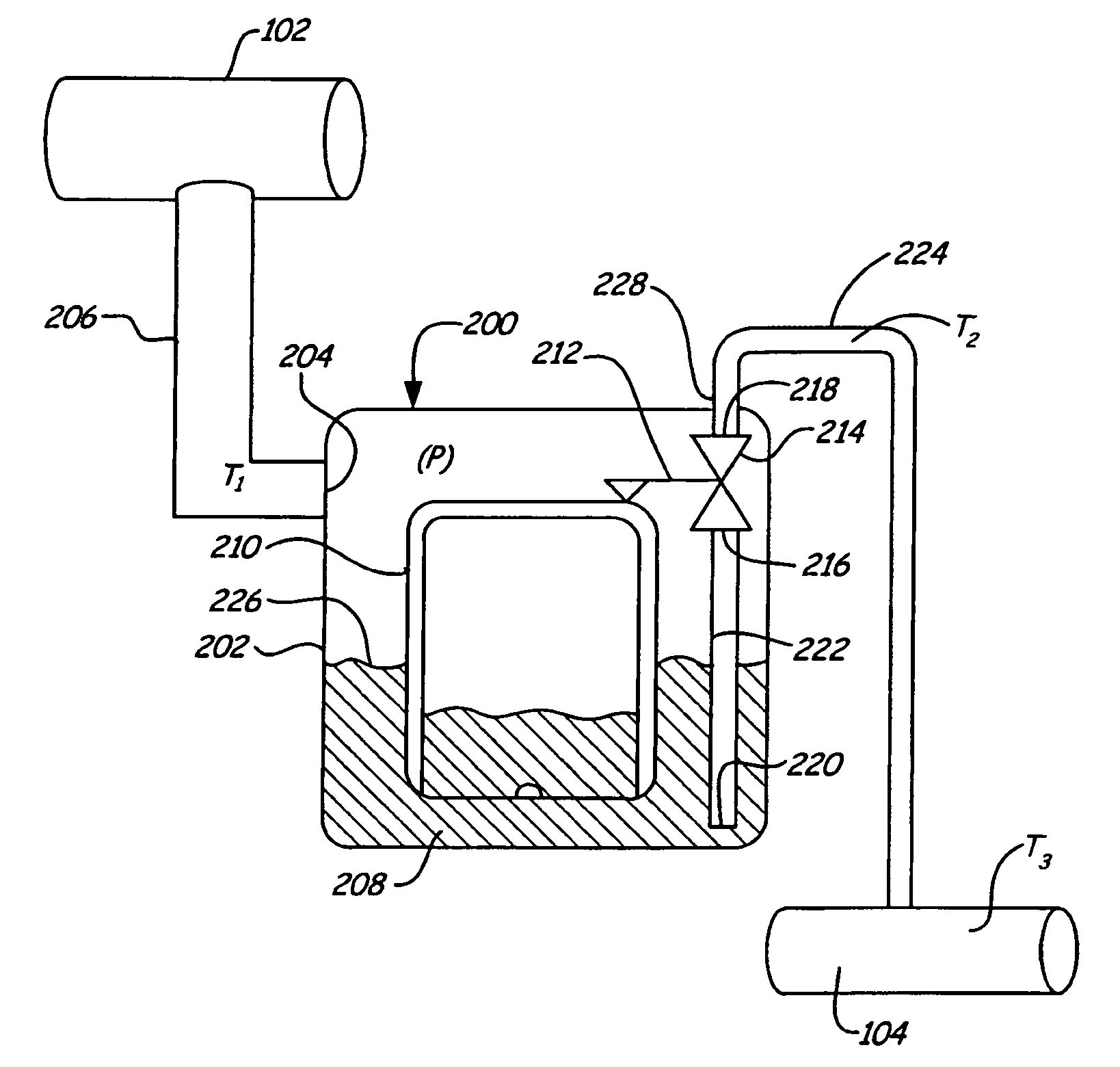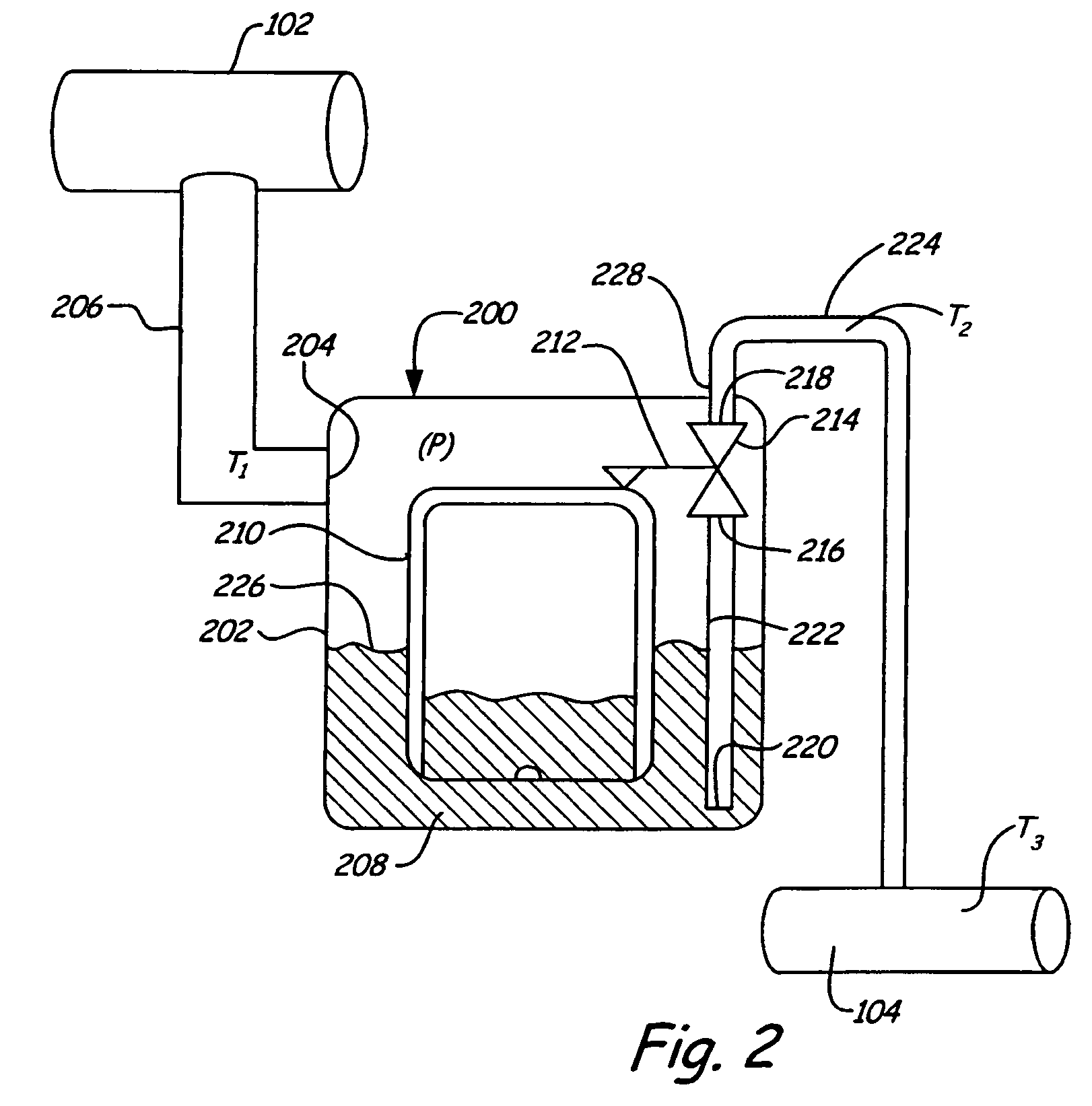Steam trap monitoring
a technology for monitoring and steam traps, applied in the direction of testing/monitoring control systems, process and machine control, instruments, etc., can solve the problems of steam traps that are completely mechanical, add any electrical wiring for power or monitoring, and are considered cost prohibitive. , the problem of steam traps experiencing a very common problem
- Summary
- Abstract
- Description
- Claims
- Application Information
AI Technical Summary
Problems solved by technology
Method used
Image
Examples
Embodiment Construction
[0013] Embodiments of the present invention can be practiced with respect to any steam trap that has an inlet that is coupled, or couplable, to a steam pipe, and an outlet that periodically releases condensate and / or air, but otherwise is expected to maintain an elevated pressure with respect to the ambient environment.
[0014]FIG. 1 is a diagrammatic view of a steam trap with which embodiments of the present invention are useful. Steam trap 100 is fluidically coupled to steam pipe 102 and water collection / return line 104. Steam pipe 102 has steam disposed therein at first pressure (P1) and first temperature (T1). The steam may be static or flowing, and may be saturated steam or superheated steam. Condensate flowing, or otherwise present within steam pipe 102 will flow into inlet 106 and accumulate in the chamber 108. Chamber 108 includes an outlet port 110 that is closed or occluded by movable member 112. Movable member 112 may comprise a baffle or any other suitable physical struct...
PUM
 Login to View More
Login to View More Abstract
Description
Claims
Application Information
 Login to View More
Login to View More - R&D
- Intellectual Property
- Life Sciences
- Materials
- Tech Scout
- Unparalleled Data Quality
- Higher Quality Content
- 60% Fewer Hallucinations
Browse by: Latest US Patents, China's latest patents, Technical Efficacy Thesaurus, Application Domain, Technology Topic, Popular Technical Reports.
© 2025 PatSnap. All rights reserved.Legal|Privacy policy|Modern Slavery Act Transparency Statement|Sitemap|About US| Contact US: help@patsnap.com



